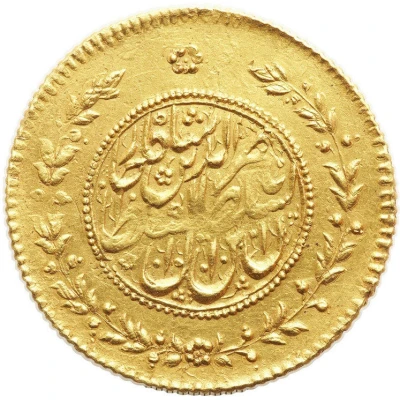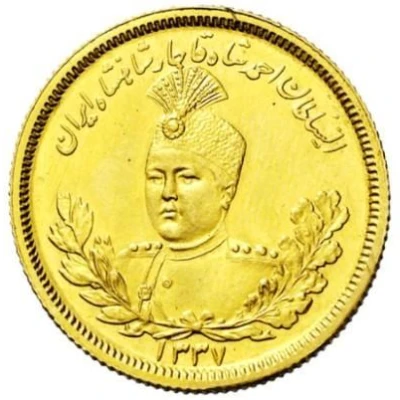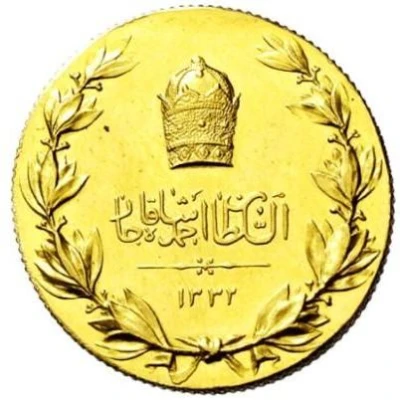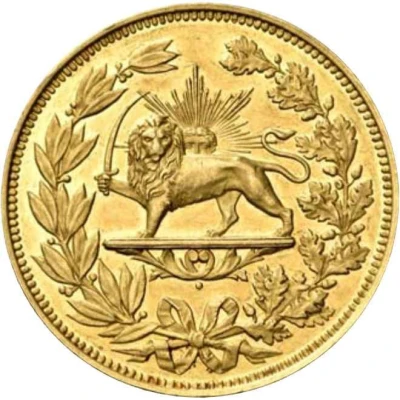


© سامعی (CC BY)
10 Toman - Fatḥ Alī Qājār
1209 (1830) year| Gold | 27.68 g | 36 mm |
| Issuer | Iran |
|---|---|
| Shah | Fath-Ali Shah (1797-1834) |
| Type | Non-circulating coin |
| Year | 1209 (1830) |
| Calendar | Iranian - Persian |
| Value | 10 Toman (تومان) (100) |
| Currency | Qiran (1825-1932) |
| Composition | Gold |
| Weight | 27.68 g |
| Diameter | 36 mm |
| Shape | Round |
| Orientation | Medal alignment ↑↑ |
| Demonetized | Yes |
| Updated | 2024-10-05 |
| Numista | N#139415 |
|---|---|
| Rarity index | 95% |
Reverse
Lettering: ۱۲۰۹
Edge
Plain
Interesting fact
One interesting fact about the 10 Toman - Fatḥ Alī Qājār 1209 (1830) gold coin from Iran is that it features a unique blend of traditional Persian motifs and European-style numismatic design. The obverse side of the coin depicts a crowned portrait of Fatḥ Alī Shah Qājār, the second Qajar king of Iran, surrounded by a wreath of flowers and leaves, while the reverse side features a stylized representation of the Sun Throne, a symbol of the Iranian monarchy, surrounded by a circle of stars. This blend of styles reflects the cultural exchange and influence that occurred between Iran and Europe during the 19th century, and makes the coin a fascinating piece of numismatic history.



